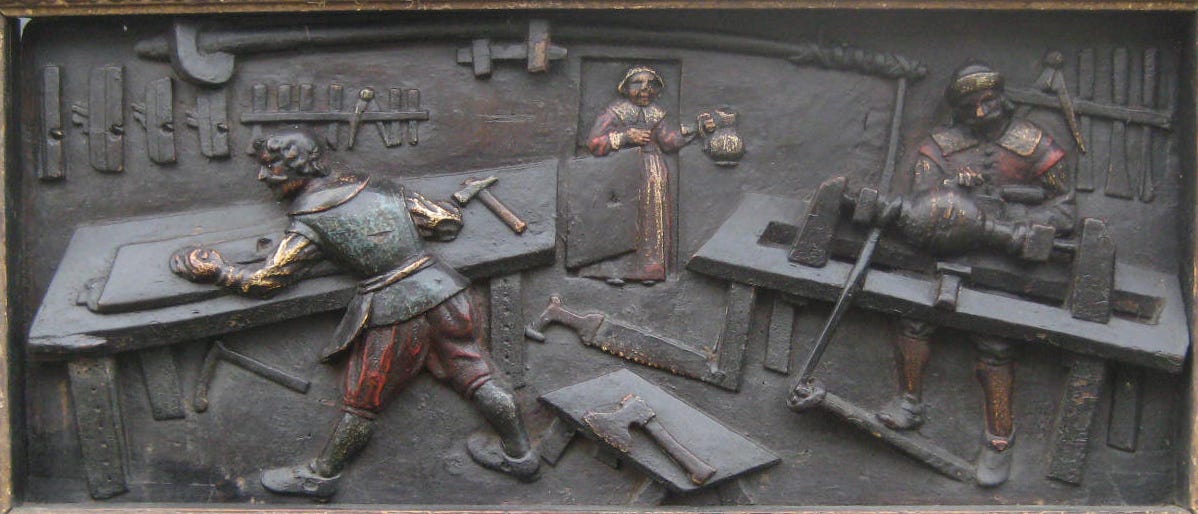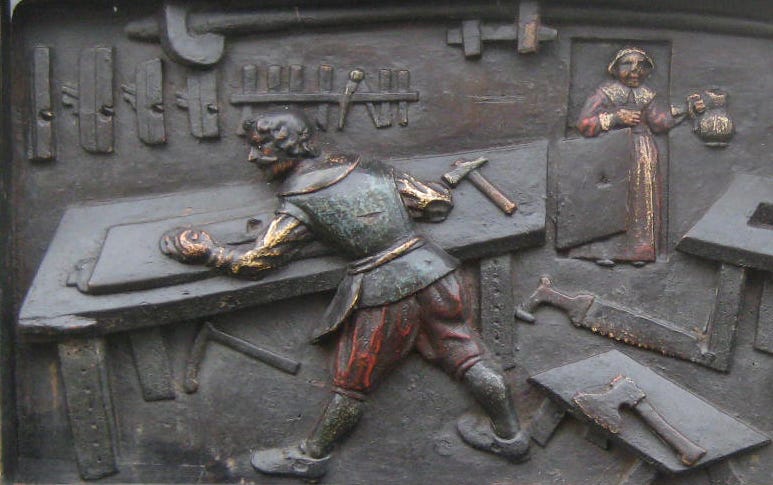[a short detour, then a detailed look at some carved panels about tools. My wife Maureen and daughter Rose have posted some of their new textile works for sale,
if you’re in the market for some seasonal fiber arts - https://www.etsy.com/shop/MaureensFiberArts ]
The Carved Panels
To study the tools used in 17th-century joiners’ shops there are a few sources. One is surviving tools that can be traced back to that period. Another is documents such as wills, probate inventories and apprenticeship contracts. Another is artwork, whether it’s paintings and prints, or in the case for today’s post - carved wood panels.
The first one I knew about is called the Stent panel, simply because at some point in its history (first half of the 20th century I think) it belonged to a man named John Stent. I probably first saw it in Benno Forman’s American Seating Furniture, which was published in 1988. Slightly later, I saw it as the cover of an earlier book by English antiques dealers Wolsley and Luff The Age of the Joiner.
It’s not large - Forman’s book records its dimensions as 14 1/2” x 28 1/2” but that includes the frame. A letter from Stent to Forman cites it as “about 24 inches by about 9 inches without the frame.” Also in that letter, the owner tells the story of sending a photograph of it to the “Woodworkers Journal” - I have a copy of a 1960 article in “Woodworker” discussing the Stent panel - presumably the journal referred to in that letter. I assume that article is by Charles Hayward. The next owner records that the panel fell off the wall during World War II and the lathe cord was broken then, since repaired. He felt the cord should go through the lathe, I might disagree.
Since those publications it has been included in many more, including two of my own - an article I did in 2002 for American Furniture and the book Jennie Alexander and I did with Lost Art Press Make a Joint Stool from a Tree.
I’ve never seen it in person, but for the Joint Stool book we got the best photo I’ve seen of it. The basic rundown is there’s a joiner on the left side of the panel, planing stock at the bench and a turner to the right, making a large pillar on a pole lathe. A woman enters the shop in between the two men, with a pitcher of (beer?). Various tools depicted behind and between the workmen give us something of a look into a period shop.
The joiner.
Keep reading with a 7-day free trial
Subscribe to Follansbee's Substack to keep reading this post and get 7 days of free access to the full post archives.






